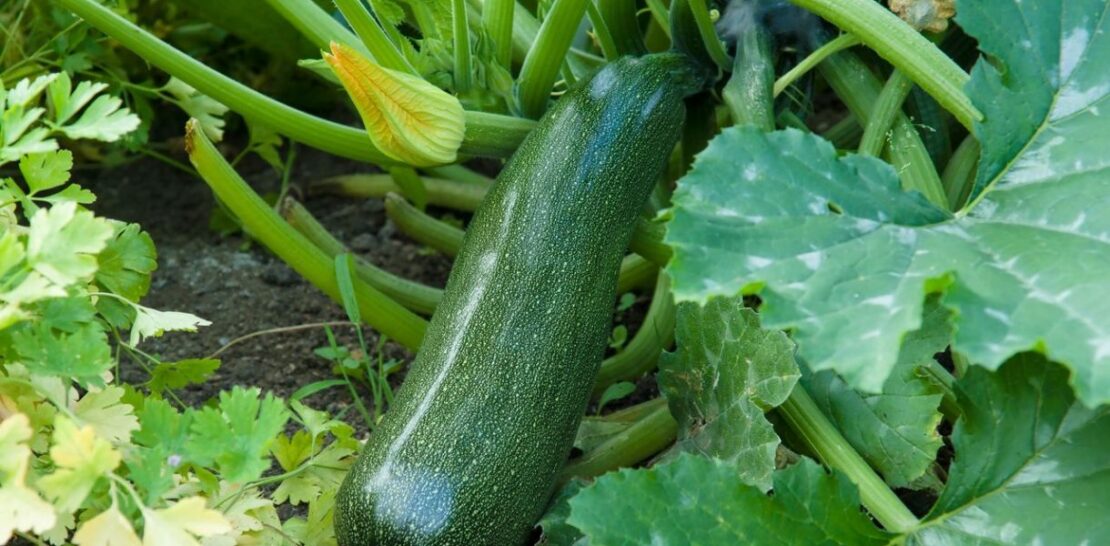Are you eager to grow your own zucchinis at home?
Look no further!
This comprehensive guide will walk you through everything you need to know about planting and caring for zucchinis in your garden.
From the ideal time to plant to the best techniques to ensure a plentiful harvest, you’ll learn all the secrets of the zucchini-growing trade.
Read on to discover the satisfying experience of cultivating your own nutritious and delicious zucchinis.
Step One: Picking the Perfect Time to Plant
Timing is crucial when it comes to growing zucchinis. In this section, we’ll explore the best time to plant your seeds or seedlings to ensure a bountiful harvest.
- Consider your climate: Zucchinis thrive in warm temperatures, making them a perfect summer crop. They require a consistent temperature of at least 60°F (16°C) to germinate, with optimal growth occurring between 70-85°F (21-29°C).
- Frost-free date: To give your zucchinis the best chance at a healthy and productive life, wait until the last frost date has passed in your area before planting. Zucchinis are very sensitive to frost, which can damage or kill the plants. Consult a local gardening expert or reference a planting calendar to determine the average last frost date for your region.
- Indoor seedlings: If you want to get a head start on the growing season, plant your zucchini seeds indoors about 4-6 weeks before the last frost date. This will give the plants time to develop strong roots and be ready for transplanting once the outdoor temperatures are consistently warm enough.
Step Two: Prepping Your Garden Space
Before you start planting, it’s essential to prepare your garden space to create the perfect environment for zucchini growth. Here’s what you need to do:
- Choose a sunny location: Zucchinis love the sun, so make sure to pick a spot in your garden that receives at least 6-8 hours of direct sunlight per day.
- Soil preparation: Zucchinis prefer well-draining, nutrient-rich soil. Work in plenty of organic matter, such as compost or well-rotted manure, to improve soil quality. Aim for a soil pH range between 6.0 and 6.8, as this is where zucchinis grow best.
- Spacing: Zucchini plants can grow quite large, so be sure to provide ample space for them to spread out. Plant seeds or seedlings about 36 inches (91 cm) apart, with at least 48 inches (122 cm) between rows.
- Adding mulch: To help retain soil moisture and suppress weed growth, add a layer of organic mulch, such as straw or wood chips, around the base of your zucchini plants once they are established.
Step Three: Planting Your Zucchinis
Now that your garden is prepped and ready, it’s time to plant your zucchinis. Follow these guidelines to ensure healthy, productive plants:
- Direct seeding: If you’re planting zucchini seeds directly in your garden, plant them about 1 inch (2.5 cm) deep and cover with soil. Water the area thoroughly to help the seeds settle in.
- Transplanting seedlings: If you’ve started your zucchinis indoors, transplant them outside once they have at least two sets of true leaves and the soil temperature is consistently above 60°F (16°C). Gently remove the seedlings from their containers, being careful not to disturb the roots. Plant each seedling in a hole slightly larger than its root ball, and fill in with soil, pressing down gently to eliminate air pockets. Water well after planting.
- Watering: Zucchinis require consistent moisture to thrive. Water your plants regularly, aiming for 1-2 inches (2.5-5 cm) of water per week, either through rainfall or irrigation. Be sure to water at the base of the plant to avoid wetting the leaves, which can lead to disease.
- Fertilizing: Zucchinis are heavy feeders, so providing them with the proper nutrients is crucial for successful growth. Apply a balanced, slow-release fertilizer at planting time, and then side-dress with additional fertilizer every 4-6 weeks throughout the growing season. Be cautious not to over-fertilize, as this can lead to excessive leaf growth and reduced fruit production.
Step Four: Maintaining and Caring for Your Zucchini Plants
Proper care and maintenance are essential for a thriving zucchini garden. Here are some tips to keep your plants healthy and productive:
Pest control: Zucchinis can fall victim to a variety of pests, such as squash bugs, cucumber beetles, and aphids. Regularly inspect your plants for signs of infestation, and use organic or chemical control methods as needed. Encourage beneficial insects, such as ladybugs and lacewings, by planting companion plants like marigolds and nasturtiums near your zucchini patch.
Disease prevention: Zucchinis can be susceptible to fungal diseases like powdery mildew. To help prevent these issues, practice proper watering techniques, promote good air circulation around your plants, and consider using organic or chemical fungicides if necessary. Crop rotation is also essential in preventing the buildup of diseases in your soil; avoid planting zucchinis in the same location for at least three years.
Pruning: While not required, some gardeners choose to prune their zucchini plants to improve air circulation, increase sunlight exposure, and encourage fruit production. Remove any dead or yellowing leaves, as well as any stems that are not producing fruit. Be cautious not to over-prune, as this can stress the plant and reduce its overall productivity.
Support: Although zucchinis are typically grown as bush-type plants, some gardeners choose to provide support in the form of stakes or cages to help manage the plant’s size and reduce the risk of fruit rot from contact with the ground. If you opt for this method, be gentle when attaching the plant to the support structure to avoid damaging the stems.
Step Five: Harvesting Your Zucchinis
Finally, the moment you’ve been waiting for: harvesting your homegrown zucchinis! Follow these tips to enjoy the fruits of your labor:
- Size matters: While zucchinis can grow quite large, they are often best when harvested at a smaller size. Aim for fruit that is 6-8 inches (15-20 cm) in length and no more than 2 inches (5 cm) in diameter. Smaller zucchinis tend to have a more tender texture and sweeter flavor.
- Frequency: Zucchini plants are productive and can produce fruit rapidly. Check your plants every 1-2 days during the peak growing season, as the fruit can quickly become overgrown if left unharvested. Frequent harvesting also encourages the plant to produce more fruit.
- Technique: When harvesting your zucchinis, use a sharp knife or pruning shears to cut the fruit from the vine, leaving a small stem attached. Avoid pulling or twisting the fruit, as this can damage the plant. Handle the harvested zucchinis gently to prevent bruising or damage.
- Storage: Freshly harvested zucchinis can be stored in the refrigerator for up to one week. For longer-term storage, consider freezing, canning, or pickling your zucchini bounty.
In conclusion, growing zucchinis in your garden can be a rewarding and delicious endeavor. By following the steps outlined in this comprehensive guide, you’ll be well on your way to enjoying a bountiful harvest of homegrown zucchinis. So, what are you waiting for? Grab your gardening gloves and get planting!




